The springtime glory of a farmhouse in Vahrn, South Tyrol, on a rainy day last week.
Hawking Hawking: Fragments of a Singular Life
by Madhusudhan Raman
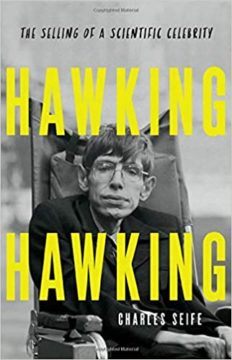 All of human life is quite literally coded into two long, complementary strands of genetic material that fold themselves into a double helix. When cells divide, copies of this genetic code must be made – a process that is known as replication. The double helix unwinds, and a “replication fork” makes its way down the helix in much the same way that a slider separates the teeth of a zipper. Once separated, enzymes get to work on replicating them. Except, only one of the strands is replicated continuously. The second strand is replicated piecewise first, and these pieces – called Okazaki fragments – are then fused together.
All of human life is quite literally coded into two long, complementary strands of genetic material that fold themselves into a double helix. When cells divide, copies of this genetic code must be made – a process that is known as replication. The double helix unwinds, and a “replication fork” makes its way down the helix in much the same way that a slider separates the teeth of a zipper. Once separated, enzymes get to work on replicating them. Except, only one of the strands is replicated continuously. The second strand is replicated piecewise first, and these pieces – called Okazaki fragments – are then fused together.
Biography, too, is an act of replication. The biographer takes a life and sets out to write its ink-and-paper twin. And while most biographers transcribe life continuously, following the natural flow of time from birth to death, Charles Seife courageously swims against the current. For in Hawking Hawking: The Selling of a Scientific Celebrity, we are treated to an Okazaki-esque biography: one that is discontinuously told, pieced together and related in reverse.
In his twenties, Stephen W. Hawking was diagnosed with amyotrophic lateral sclerosis, a neurodegenerative disorder that caused him to progressively lose control of nerve cells that allow for movement. His disability, which soon necessitated the use of a motorised wheelchair and a computerised speech device, defined him in the eyes of the public, much to his disappointment. Hawking the Pop Culture Icon was in his element in the limelight, though, enjoying a celebrity status that afforded him cameos in Star Trek and The Simpsons, in addition to a number of other documentaries. Read more »
This Scented Air: Book Review of “The Prophet’s Heir: Ali Ibn Abi Talib”
by Maniza Naqvi
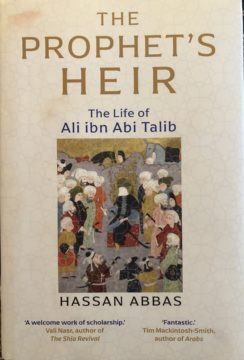 Hassan Abbas’s book, “The Prophet’s Heir: The Life of Ali ibn Abi Talib,” provides an excellent basis for much research, reflection and conversations.
Hassan Abbas’s book, “The Prophet’s Heir: The Life of Ali ibn Abi Talib,” provides an excellent basis for much research, reflection and conversations.
For many of us this poetic verse feels as though it were a statement of fact:
Ghalib Nadeem e dost sey ati hey bo e dost
Mashgul e Haq hon bandagee-ey boo Turab mein
From the fragrance of the divine friend comes the scent of the friend
I am immersed in search of Truth in my devotion to Ali.
Who are these friends and what is that scent? The Message of Islam is revealed onto the Prophet Mohammad at age 40. Alongside Mohammad is his unwavering constant dearest companion—one of the first to accept Islam— and born in the Kaaba, his 9 year old kid cousin Ali ibn Talib whose mother and father raised Mohammad as their own child, long before Ali was born. For Mohammad, peace be upon him, Ali is the loyal adoring kid brother, the protege, and in age difference the son. The Prophet chooses Ali, as his example of the path of Islam the Shariah—-he recognizes him and entrusts Ali as the exemplary embodiment of what Islam means. The Prophet is the Messenger and his closest companion Ali, who pledged his loyalty to Allah and his Prophet and his message is the essence of Islam, he is the Shariah—- lived. The Prophet peace be upon him proclaimed this essence as:
Man Kunto Maula fa hazaa Ali-un Maula
For whom ever I am Leader and Teacher, Ali is his Leader and teacher too.
For most of us gathered here today this essence translates to exquisite beauty lit by splendor achieved through love and loss and longing and struggle. This beauty moves us inexplicably, —moves us towards justice and generosity and kindness. Read more »
Monday, April 26, 2021
The Founders Flounder
by Michael Liss
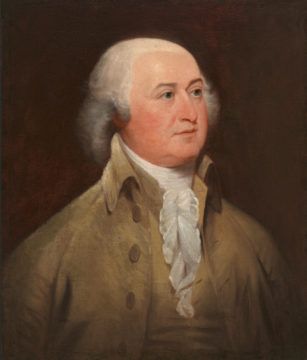
There was a time when we had no political parties.
It was brief, like the glow of a firefly on a warm late summer evening, but it occurred. There were no political parties at the time of the American Revolution, or when the newly freed colonies joined in the Articles of Confederation. None at the time they went to Philadelphia to hammer out the Constitution, and none when it was ratified (although the supporters of it were called Federalists and Alexander Hamilton eventually organized them as a party). For the first three years of the new government, until May of 1792, when Thomas Jefferson and James Madison founded the Democratic-Republican Party, the Federalists were the only political party in the land.
When we 21st Century Americans, out of desperation, look to the Constitution for a way out of intractable and pernicious partisanship, we often look in vain for the answers because they really aren’t there. The Constitution was not intentionally designed to compensate for party-based partisanship. Rather, it was a balancing act between regional forces, between economic interests, between small and big states, between slave and free, and between political philosophies. The Framers needed to find enough compromises to get the states to agree to the new framework. No interest got everything, but all got something, because they had to. Why join otherwise?
Obviously, the Framers were aware of political parties (England’s Parliament had its Whigs and Tories). They were also aware of the dangers of partisanship (most notably, Madison in Federalist No. 10). But they hadn’t yet made the leap to only negotiating governance through the synthetic framework of a multiparty system, nor to the idea of candidates for Chief Executive differentiating themselves by party identification. The model for a President was in front of everyone—George Washington. Read more »
Monday Poem
God gave names to all the animals,
in the beginning, in the beginning
…………………………—Bob Dylan
Cut to the Chaste
to be called anything,
to be called, Jim, for instance,
is to be tagged for life
unless you choose otherwise
and pull a new name from a hat—
a new you, say, Ed— which would amount
to a tangle of official undoing
as bureaucrats mined reams of documents
to remake an identity with digital white-out
in a shitstorm of confusion to fashion a new you
when it would be more direct,
though sweatingly more difficult
(wrenching perhaps, perhaps impossible)
to turn your heart and head
inside out, scour what’s feckless within,
cramped, sour, stained, into gleaming radiance
as when you slid new into the world
so that a new name would be uncalled for
and need never to be said
—or, cut to the chaste,
start young
Jim Culleny
9/16/20
Other People’s Children: The Struggle for Moral Clarity At The Border/Hijos De Otras Personas: La Lucha Por La Claridad Moral En La Frontera
by Eric J. Weiner
Border culture is a project of ‘redefinition’ that conceives of the border not only as the limits of two countries, but also as a cardinal intersection of many realities. In this sense, the border is not an abyss that will have to save us from threatening otherness, but a place where the so-called otherness yields, becomes us, and therefore comprehensible–Guillermo Gomez-Peña, 1986
La cultura fronteriza es un proyecto de “redefinición” que concibe la frontera no sólo como los límites de dos países, sino también como una intersección cardinal de muchas realidades. En este sentido, la frontera no es un abismo que deba salvarnos de la otredad amenazante, sino un lugar en el que la llamada otredad cede, se convierte en nosotros y, por tanto, es comprensible–Guillermo Gómez-Peña, 1986
 Nelson Mandela, in a speech inaugurating the Nelson Mandela Children’s Fund, said, “There can be no keener revelation of a society’s soul than the way in which it treats its children.” Echoing his words, the authors of UNICEF’s Child Poverty Report write, “The true measure of a nation’s standing is how well it attends to its children – their health and safety, their material security, their education and socialization, and their sense of being loved, valued, and included in the families and societies into which they are born.” As people in the U.S. and throughout the world bear witness to other people’s children languishing in overcrowded facilities along the southern border of the United States, I think a more keener revelation of a nation’s soul and a measure of its standing is how well it treats other people’s children—their health and safety, their material security, their education and socialization, and their sense of being loved and valued.
Nelson Mandela, in a speech inaugurating the Nelson Mandela Children’s Fund, said, “There can be no keener revelation of a society’s soul than the way in which it treats its children.” Echoing his words, the authors of UNICEF’s Child Poverty Report write, “The true measure of a nation’s standing is how well it attends to its children – their health and safety, their material security, their education and socialization, and their sense of being loved, valued, and included in the families and societies into which they are born.” As people in the U.S. and throughout the world bear witness to other people’s children languishing in overcrowded facilities along the southern border of the United States, I think a more keener revelation of a nation’s soul and a measure of its standing is how well it treats other people’s children—their health and safety, their material security, their education and socialization, and their sense of being loved and valued.
Nelson Mandela, en un discurso de inauguración del Fondo Nelson Mandela para la Infancia dijo: “No puede haber una revelación más aguda del alma de una sociedad que la forma en que trata a sus niños”. Haciéndose eco de sus palabras, los autores del Informe sobre la Pobreza Infantil de UNICEF escriben: “La verdadera medida del prestigio de una nación es lo bien que atiende a sus niños: su salud y seguridad, su seguridad material, su educación y socialización, y su sensación de ser amados, valorados e incluidos en las familias y sociedades en las que nacen”. Mientras la gente en Estados Unidos y en todo el mundo es testigo de cómo los niños de otras personas languidecen en instalaciones superpobladas a lo largo de la frontera sur de Estados Unidos, creo que una revelación más aguda del alma de una nación y una medida de su posición es lo bien que trata a los niños de otras personas: su salud y seguridad, su seguridad material, su educación y socialización, y su sentido de ser amados y valorados. Read more »
Carve
by Akim Reinhardt

I say carve.
You imagine a chisel flaking or chipping or gouging wood or stone.
I say line.
Now you see the chisel slicing and curving redoubled trenches through the surface.
I say straight.
You stir uneasily in your chair, or readjust your stance if you’re standing, perhaps mildly shrugging one shoulder. The chisel, for reasons you can’t imagine, carves a straight line. It is not rotating, turning, angling, or otherwise expressing itself creatively. It is simply working
This is not art, you murmur to yourself. This is just a straight line.
So odd, the word murmur. What a strange assortment of letters. A row of three, repeating itself once. rum rum backwards. Not red rum, such as murder backwards. Just rum rum. Why even one rum, much less two of them, cleaved together for reasons that are beyond us?
There is no rum here, light or dark, no molasses, no slaves. No triangular trade, carved through the Atlantic Ocean by large, wooden sailing ships, from Britain or Portugal or the Netherlands or Spain to Africa, usually West but occasionally Central, to the Caribbean islands, or perhaps to Brazil, and once in a while northward to the North American mainland, before returning back to Britain or Portugal or the Netherlands or Spain. Read more »
Perceptions
Angry Atheists
by Jeroen Bouterse
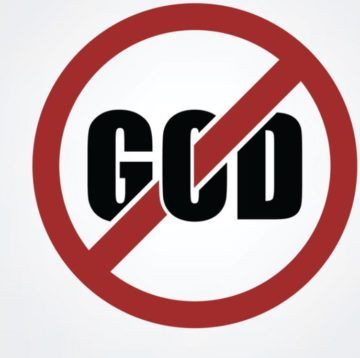 “Why, during the seventeenth century, did people who knew all the arguments that there is a God stop finding God’s reality intuitively obvious?” This, says Alec Ryrie in his Unbelievers: An Emotional History of Doubt (2019), is the heart of the question of early modern unbelief (136).
“Why, during the seventeenth century, did people who knew all the arguments that there is a God stop finding God’s reality intuitively obvious?” This, says Alec Ryrie in his Unbelievers: An Emotional History of Doubt (2019), is the heart of the question of early modern unbelief (136).
Ryrie’s point is that arguments pro or contra theism, and the influence of philosophical and scientific developments upon these arguments, are not actually crucial to the possibility of unbelief. The currents that run underneath these arguments are instinctive, emotional, and these are what we should look at if we want to understand doubt and denial of Christian theism historically. The history of unbelief is not primarily the history of eighteenth-century Enlightenment radicals and nineteenth-century science warriors, but of premodern anger and anxiety.
This also means that it is a history internal to Christendom: atheism, to Ryrie (himself a lay minister in the Church of England), is not essentially alien to Christianity; especially post-Reformation, it is a bug in the system itself, one that at times almost looks like a feature. The very self-criticism and soul-searching that come to define a faithful believer can lead her to recognize that she believes in her heart that there is no God. Read more »
L’Amour à Mort!
by Rafaël Newman
Love is as strong as death, but no stronger.
The NewMen, “Uncle Leo”
 On Saturday, April 10, 2021, in Fribourg in the west of Switzerland, Besuch der Lieder, the troupe of musicians with whom I serve as a dramaturge, staged its first performance after a hiatus of more than a year: for once, however, not, as our concept dictates, an in-house song recital in the fashion of the nineteenth century, but rather, COVID oblige, a live stream via YouTube. Annina Haug, mezzo-soprano, and Edward Rushton, piano, performed Lieder by Schumann and Strauss and mélodies by Fauré and Saint-Saëns; I commented on our choice of songs. What follows is our programme, with links to the texts sung in their original languages, interspersed with an adapted version of my remarks (given on the occasion, in honor of the bilingual character of the host canton, in German and French, as well as in English; translations of poems below are mine). The recital itself can still be “attended” here. Read more »
On Saturday, April 10, 2021, in Fribourg in the west of Switzerland, Besuch der Lieder, the troupe of musicians with whom I serve as a dramaturge, staged its first performance after a hiatus of more than a year: for once, however, not, as our concept dictates, an in-house song recital in the fashion of the nineteenth century, but rather, COVID oblige, a live stream via YouTube. Annina Haug, mezzo-soprano, and Edward Rushton, piano, performed Lieder by Schumann and Strauss and mélodies by Fauré and Saint-Saëns; I commented on our choice of songs. What follows is our programme, with links to the texts sung in their original languages, interspersed with an adapted version of my remarks (given on the occasion, in honor of the bilingual character of the host canton, in German and French, as well as in English; translations of poems below are mine). The recital itself can still be “attended” here. Read more »
Catspeak
by Brooks Riley
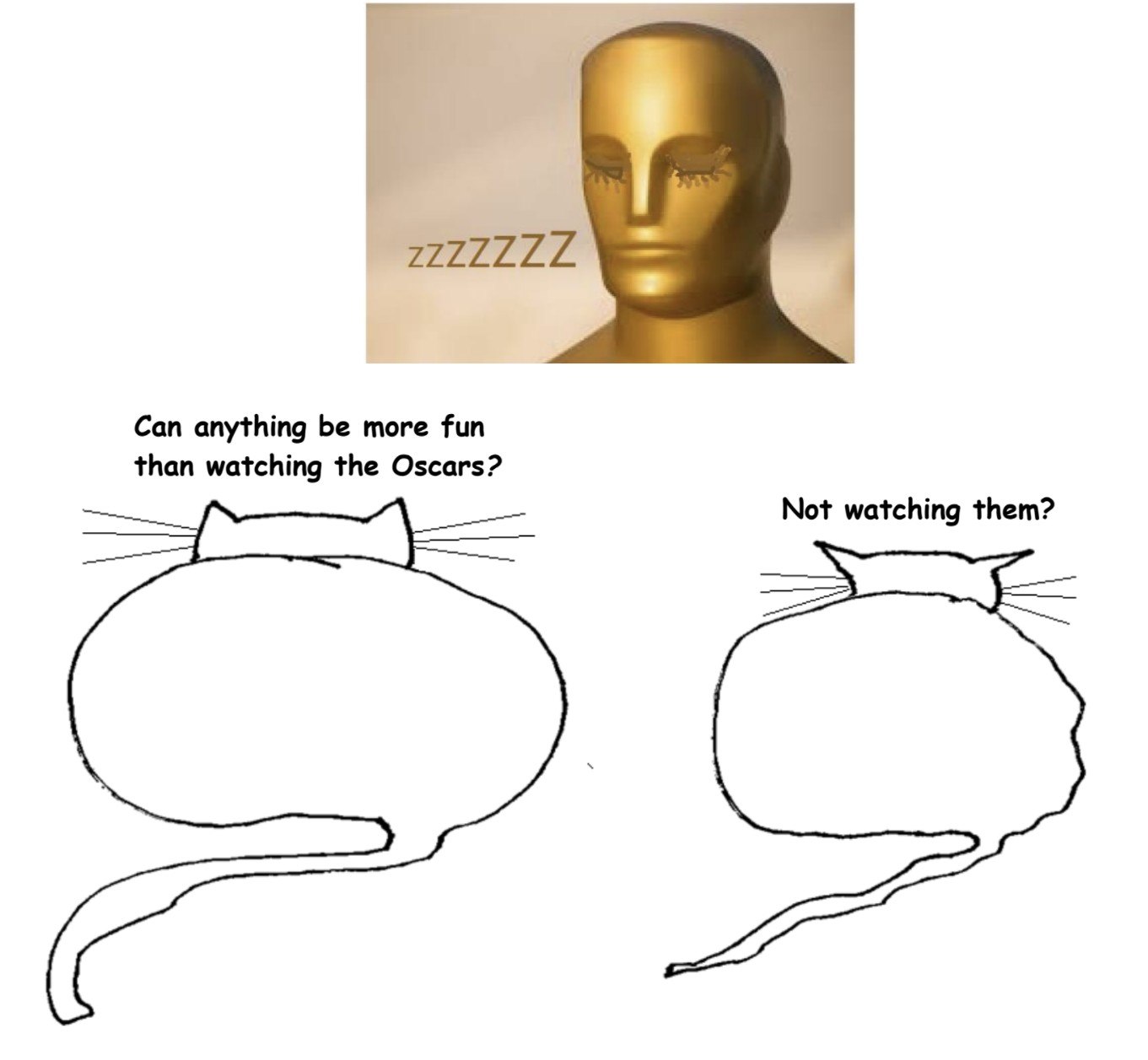
The future of not working
by Sarah Firisen
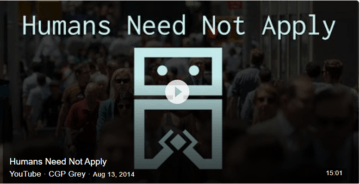 I recently had a conversation with someone I know who is around 50 and has been out of work since the COVID-19 pandemic started. He’s had a challenging life over the last 20 years or so dealing with addiction. While he once had a successful career, since rehab, he’s been working pretty low-level jobs in catering, an industry that died during lockdown. I asked him what he’s going to do as lockdown eases, and he confessed that this last year or so has been the best year of his life. With his stimulus and unemployment money, he’s had the time to paint and write, and he’s loved it.
I recently had a conversation with someone I know who is around 50 and has been out of work since the COVID-19 pandemic started. He’s had a challenging life over the last 20 years or so dealing with addiction. While he once had a successful career, since rehab, he’s been working pretty low-level jobs in catering, an industry that died during lockdown. I asked him what he’s going to do as lockdown eases, and he confessed that this last year or so has been the best year of his life. With his stimulus and unemployment money, he’s had the time to paint and write, and he’s loved it.
I’ve written before around the question, “Does work have to be such….work?” I wrote, “As automation creeps into more and more back and front office work, there’s a lot of understandable fear about loss of jobs. But in reality, a lot of automation will be…taking out a lot of the drudgery that most of us inevitably have in our daily work. ” The pandemic has allowed, in some cases, forced many people to reevaluate their lives and careers and consider what really makes them happy. We’ve all had reason to appreciate better the small joys in life: family, friends, being able to go out to restaurants and travel to see those we love. But, for many people, it’s also changed their relationship with work. Working from home has given many people a new freedom and flexibility that most don’t seem willing to give up as restrictions ease.
There’s an interesting video from a few years ago called “Humans need not apply.” It raises the specter of automation decimating all sorts of industries, from transportation to the medical field. It challenges analogies to the industrial revolution. These analogies paint the rosy picture that the jobs destroyed were horrible, dangerous, low-paid jobs anyway. The video claims that such analogies don’t consider the sheer scale of the job replacement that this new automation will bring. The video questions the possible future where people can now spend their time doing more human endeavors, like writing poetry. The video posits that it’s hard to imagine a poetry-based economy that will help support all the theoretically now-unemployed and unemployable people. But what if this view of what a future without “work” for many people looks like is too narrow? Perhaps, we need a paradigm shift in thinking. Read more »
On the Road: Pandemic Scorecard
by Bill Murray
 They call it the Sargasso, this grass. It is the bane of Belize, an invasive floating weed that keeps pitchforks flailing along the waterfront. The Sargasso Sea, we know where that is. But this grass is from Brazil, Réné says. It’s a new challenge from a new place. It isn’t challenge enough just to weather a pandemic, he says. Now there’s this, too.
They call it the Sargasso, this grass. It is the bane of Belize, an invasive floating weed that keeps pitchforks flailing along the waterfront. The Sargasso Sea, we know where that is. But this grass is from Brazil, Réné says. It’s a new challenge from a new place. It isn’t challenge enough just to weather a pandemic, he says. Now there’s this, too.
The hotel receptionist tries to convince a lady on the phone the grass isn’t so bad here. It’s worse other places, he suggests carefully, not to cast aspersions. Réné, a snorkel boat pilot, might wonder where as he tends his Honda outboards like a Mekong longtail runner clearing water hyacinth.
Réné has a less sales brochure-oriented assessment: we’ve done this to ourselves. This nasty bit of seaweed is from Brazil, human caused, product of fertilizer, effluent from the Amazon. Look at this, he scoops a random handful into the boat. These are seeds, it breeds right here just floating on the water.
Welcome to other people’s problems.
We just returned from our first trip abroad in 14 months. Belize is feeling the strain of the lack-of-tourism, as I sense they do most things, gently. The smiles are there. No people could be looser, more easy-going, nicer, and it’s just as pretty as you hoped; Belize, and its gracious people, are lovely. Read more »
Monday Photo
Born to Groove: Up from Mud and Back to Our Roots
I don’t remember exactly what I was saying – this conversation took place over a half century ago – but perhaps I was explaining why I choose to become a scholar rather than a musician. What I remember is Gren’s reply: You ARE a musician. After awhile he convinced me.
 That is, we had to talk about it. I thought of a musician as someone who made a living performing music. I didn’t do that. To be sure, I made some money playing around town in a rock band and I’d spent years learning the trumpet. I’d marched in parades and at football games; I’d played concerts with various groups. But I wasn’t a full-time, you know, a professional musician, a real musician. Gren insisted that I was a musician because I played music, a lot, and was committed to it. That’s all that’s necessary.
That is, we had to talk about it. I thought of a musician as someone who made a living performing music. I didn’t do that. To be sure, I made some money playing around town in a rock band and I’d spent years learning the trumpet. I’d marched in parades and at football games; I’d played concerts with various groups. But I wasn’t a full-time, you know, a professional musician, a real musician. Gren insisted that I was a musician because I played music, a lot, and was committed to it. That’s all that’s necessary.
He was right of course. I was a musician then and I’m one know. Three decades after that conversation I published a book, Beethoven’s Anvil: Music in Mind and Culture, in which I argued that music is what transformed groups of very clever apes into human beings. In THAT sense we’re all musicians. It’s our heritage.
Alas, too many of us have been robbed of that heritage and have been bamboozled into thinking that only special talented people should be making music. Nope. It’s time to flip the script. We’re born to groove. Read more »
Eilean records
by Dave Maier
 Podcast time! Eilean is one of my very favorite ambient labels, so I felt a retrospective would be in order. The project is finished, alas, but you can still pick up the entire series of 100 releases for a shockingly low price. Don’t be put off by unfamiliar names here, this is some great stuff. More to come!
Podcast time! Eilean is one of my very favorite ambient labels, so I felt a retrospective would be in order. The project is finished, alas, but you can still pick up the entire series of 100 releases for a shockingly low price. Don’t be put off by unfamiliar names here, this is some great stuff. More to come!
Since many of these names were unfamiliar to me as well, I don’t have a whole lot to add, so I’ll be quoting quite a bit from the relevant webpages. Follow the links for more!
Widget below. Here’s the direct link if you can’t wait (or if the widget is cranky): https://www.mixcloud.com/duckrabbit/stars-end-annex-special-edition-eilean-records-part-1/
Monday, April 19, 2021
Institutionalizing Public Philosophy
by Scott F. Aikin and Robert B. Talisse

Enthusiasm for public philosophy, and public-facing scholarship more generally, is pervasive. As active contributors to the “public philosophy” genre, we hold that it’s valuable for academics to reach out to broader audiences. It’s good to think deeply about the issues central to living a meaningful life, and this activity shouldn’t be confined to the halls of academia.
Yet the practice of public philosophy occasions problems of its own. To start, there is the tendency towards cheapening and deforming philosophical reflection, which comes with selling philosophical programs as “life hacks” and self-help regimens. This tendency is often accompanied by an effort to monetize philosophy, which in turn of course makes it less “public.” We’ve already written on this problem (here and here). Setting this aside, there is an additional problem. Enthusiasm for public-facing work among professors has recently begun percolating up into university administration. This, in part, has been fueled by the insistence among the professoriate that public scholarship ought to be “institutionalized,” counted alongside strictly academic work for purposes of promotion, merit assessment, and other forms of advancement. In short, college administrators have begun warming to the idea that faculty ought to develop a profile of public outreach. In some institutions, that faculty will contribute public-facing work is a more-or-less explicit expectation, often tied, albeit vaguely, to benchmarks for promotion and other institutional rewards.
We’re suspicious of the proposal that public-facing scholarly activities should be institutionalized. Read more »
Mathematical Dæmons
by Jonathan Kujawa
Every institution has its founding myths. In mathematics, one of ours is that mathematical truths are unassailable, universal, and eternal. And that any intelligent being can discover and verify those same truths for themself.
This is why movie aliens who want to communicate with us usually use math [1]. The cornerstone of this myth is that mathematicians give airtight logical arguments for their truths. After all, Pythagoras knew his eponymous theorem 2500 years ago and it’s as true as it ever was. And it was equally true in Mesopotamia 3500 years ago and in China and India 2000+ years ago.
The idea of a “mathematical proof” is what makes math, math.
This semester I am teaching our introduction to mathematical proofs course. The not-so-secret purpose of the class is to help students transition from being mathematical computers to being mathematical creators. The students learn what it means to think mathematically. This includes how to take vague and ill-framed questions and turn them into mathematics, how to creatively solve those problems, and how to communicate those solutions in written and verbal form.
A huge part of the course is teaching the students what it means to give a valid proof. They learn about direct proofs (a direct logical march to the desired result), proofs by contradiction (if the desired result weren’t true, then one is forced to a logical impossibility), proofs by induction (using a recursive loop to verify the desired result), and more. They also learn some of the common pitfalls like pre-supposing the desired result and thereby begging the question.
The topics of the course are basic number theory, set theory, logic, functions, and the like, but the real content is how to read and write proofs. Read more »
The Slightly Wrong Physics of Spinning Muons
by David Kordahl

If you follow science news, there’s a good chance that you’ve recently heard about Muon g-2 (pronounced “mew-awhn gee minus two”), an experiment whose preliminary results were announced to media fanfare and general excitement. The experiment’s most recent iteration is going on at Fermilab, the physics facility outside Batavia, Illinois, but it continues an experiment that wrapped at Brookhaven National Lab, over in New York, back in the mid-2000s. The experimental appratus, a magnetic ring some 50 feet across, traveled from one lab to the other in a single piece—the pictures of this are impressive—all so the anomalous magnetic dipole moment of the muon could be measured with an unprecedented precision.
The vocabulary itself here was a challenge for headline writers. The main focus was about how this measurement of … whatever it was … would be revolutionary. “A Tiny Particle’s Wobble Could Upend the Known Laws of Physics,” went a headline at the New York Times. “Muon g-2 Experiment at Fermilab Finds Hint of New Particles,” wrote Quanta. An explainer comic from the American Physical Society stressed how “new discoveries are on the horizon,” and Résonaances, a blog widely read by physicists, noted the deluge of new g-2 papers, and found hints that might “open a new experimental era that is almost too beautiful to imagine.”
I have no argument with any of these articles, but they are mainly concerned with narrative building, with explaining how the new measurements fit into an ongoing quest to go beyond the standard model, the “standard model” being a bland summary term for all fundamental physics except for gravity. (Gravity gets its own fundamental theory—viz., general relativity.) But while these articles ably summarized why physicists care about these measurements, they contained hardly any physics, hardly any material of the sort that, after reading, lets you understand what’s going on out there, beyond mere social descriptions. Read more »


 ET Trigg. I Can’t Breathe, 2020.
ET Trigg. I Can’t Breathe, 2020.
 Ekua Holmes. There’s No Place Like Home.
Ekua Holmes. There’s No Place Like Home.